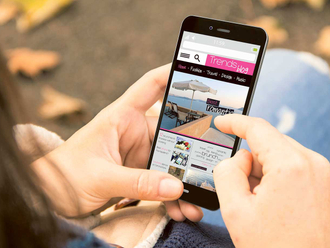When Auntie Anne’s, the pretzel chain, wanted to tempt moms in Atlanta shopping malls with free offers, it dished out coupons through smartphones that could be redeemed immediately for a free drink or other specials.
But while the moms received the coupons on their iPhone or Android device, the power behind the campaign was not Google or Apple — it was Millennial Media, a six-year old independent that has grabbed the No 2 spot in mobile advertising in the US.
Google is No 1, but the flexibility of its smaller rivals is helping them catch up in a US market that is expected to triple in size to more than $20 billion (Dh73.4 billion) in the next three years, according to research firm Gartner. Smaller firms have the freedom to reach users who use any mobile operating system, unlike Apple, which promotes advertising on its Apple iOS platform, and Google, which handles advertising across all devices but also has its own platform, Android.
“Advertisers want to be able to reach the broadest population they can and in the mobile world, where the platforms are fragmented, this gives an opening to the providers who are truly platform neutral,” Gartner analyst Andrew Frank said.
Google held 24 per cent of the US market last year, while Millennial had 17 per cent and Apple 15.5 per cent, according to market research firm IDC. Unlisted Jumptap held 9.5 per cent, Yahoo 7.5 per cent and India’s InMobi 2.2. per cent.
Investments
Millennial, a roughly $1 billion company, is a great bet for someone looking for investments in mobile advertising, said Steven Dray, a portfolio manager at investment firm AlphaOne Capital Partners LLC. “When you get to brand advertising, which is eventually going to be a huge pile of money that’s going to move from traditional advertising to mobile, I think that’s where Millennial and some of the smaller players could have very good success,” Dray said.
As consumers increasingly surf the Web on the go, advertisers are looking to ply them with targeted information about nearby restaurants, pubs, theatres, shops and salons.
But there’s no point pitching a shampoo to a skinhead, so the secret sauce for advertisers is user information — and Millennial’s trove of user data is what CEO Paul Palmieri is counting on to give his firm an advantage.
Millennial gathers “first-party” data — information that users provide to a publisher, or that is gleaned from surfing habits that website owners share with advertising companies.
The smaller companies tout their tight focus on the mobile sector, rather than worrying about how that fits in with online advertising.
Rising competition
But the big guns are not far away. The entry of Facebook and Twitter is expected to change mobile advertising.
Facebook, which declined to comment for this story, is investing heavily in improving mobile applications and creating new metrics to measure the success of mobile advertising — a move expected to give a fillip to the wider market.
Road blocks
The mobile advertising model has its detractors, and some have groused that the small screen on mobile devices makes viewing advertisements difficult, while a lack of good mobile websites might keep away potential viewers.
Users tend to spend less time on their mobiles in one go and advertisements have to be designed for short attention spans.
“I think it’s still a struggle. Most of the advertising that you see on mobile devices today is still predominantly not very well targeted or not very granually targeted,” Frank said.











